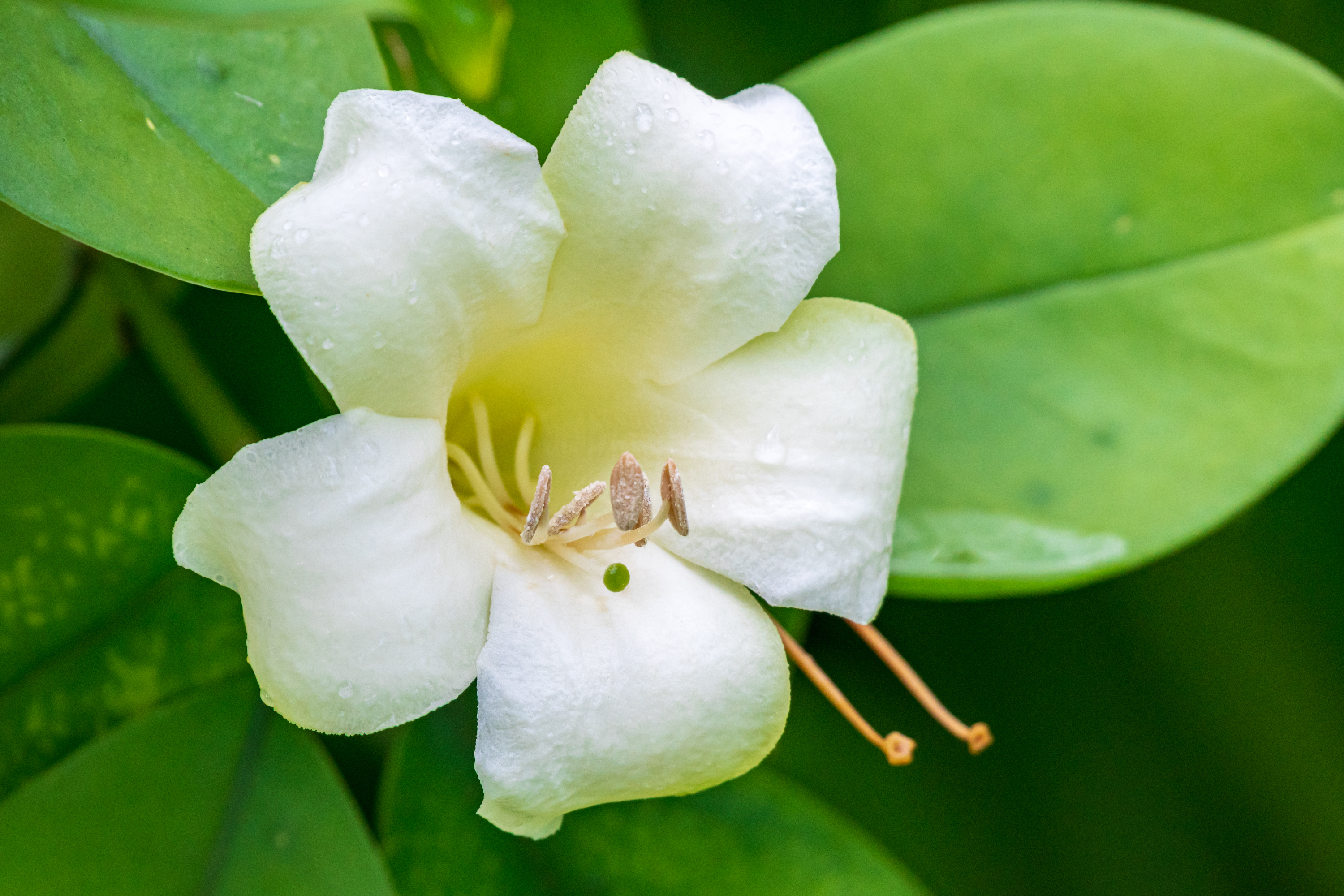Fagraea ceilanica
(Fagraea ceilanica)

Description
Fagraea ceilanica is a species of small tree in the family Gentianaceae growing to heights of up to 10 metres. Typical habitat is seasonal tropical forest, but it is also grown as an ornamental tree in many places in India, Indo-China and Malesia. It has been described as "epiphytic" or a "strangler" when young, since like strangling figs (Ficus) its seeds germinate in cracks and branch joints of living tree trunks from where the young plants' roots grow around the trunk down to the ground, using the tree as support but without killing it. Occasionally flowering Fagraea ceilanica bushes are seen high up on tree trunks, remaining there as epiphytes. It is also recorded as a lithophyte growing on rocks and rock faces. Leaves are fleshy, shiny and typically lanceolate, 100-180 x 50–80 mm, with a petiole to 25 mm long. The inflorescence is terminal or axillary, few-flowered (see illustration). Flowers are 60–80 mm cream/white typically in March–August. The calyx is 5-lobed each approx. 8 mm long. The funnel-shaped corolla is 40–50 mm long with five broad lobes, twisted to right, and 5 adnate stamens are attached to base. A capitate stigma is attached to the ovary, which is 2-celled and containing many ovules in each. Fruiting is typically in August–November; structurally they are shiny berries (see illustration): 20-40 x 15–30 mm and containing many seeds. Fagraea is a genus of plants in the family Gentianaceae.It includes trees, shrubs, lianas, and epiphytes. They can be found in forests, swamps, and other habitat in Asia, Australia, and the Pacific Islands, with the center of diversity in Malesia. Many Fagraea species have a variety of human uses, particularly the wood and flowers. The flowers open in the evening and are often fragrant and bat-pollinated. They are so conspicuous they have roles in Polynesian mythology. They make the trees attractive as ornamental plantings. Some are used in leis. Fagraea auriculata produces a flower over 30 centimeters wide, one of the largest flowers of any plant in the world. Many species, especially the Malesian taxa, have valuable wood. It was used to carve tikis. Some have been used in traditional medicine, perfumery, and aromatherapy. The flowers are featured in the traditional artwork of various cultures. The fruits are food for many animals, including cassowaries, flying foxes, and civets.
Taxonomic tree:







